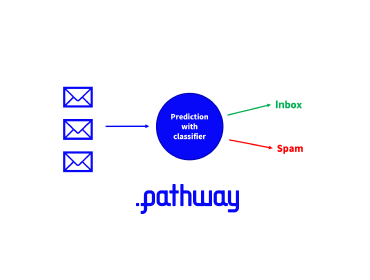Computing PageRank
Introduction
PageRank is best known for its success in ranking web pages in Google Search engine. Here is a quick description:
PageRank works by counting the number and quality of links to a page to determine a rough estimate of how important the website is. The underlying assumption is that more important websites are likely to receive more links from other websites.
In fact, the algorithm outputs a probability distribution that represents the likelihood of arriving at any particular page after randomly clicking on links for a while. We will simulate this behavior by the following 'surfing the Internet' procedure:
- Initially, at each page, some amount of people start surfing the internet from that page.
- In each turn, some users decide to click on a random link and visit a new page.
- We iterate for a fixed number of rounds.
This article assumes that you are already familiar with some basics of Pathway transformations.
Code
First things first - imports and constants.
from typing import Any
import pathway as pw
I/O Data
We use an Edge schema to represent the graph and Result schema to represent the final ranks.
class Edge(pw.Schema):
u: Any
v: Any
class Result(pw.Schema):
rank: float
pagerank performs one turn of 'surfing the Internet' procedure by uniformly
distributing rank from each node to all its adjacent nodes, for a fixed number of rounds.
def pagerank(edges: pw.Table[Edge], steps: int = 5) -> pw.Table[Result]:
in_vertices = edges.groupby(id=edges.v).reduce(degree=0)
out_vertices = edges.groupby(id=edges.u).reduce(degree=pw.reducers.count())
degrees = pw.Table.update_rows(in_vertices, out_vertices)
base = out_vertices.difference(in_vertices).select(flow=0)
ranks = degrees.select(rank=6_000)
grouper = edges.groupby(id=edges.v)
for step in range(steps):
outflow = degrees.select(
flow=pw.if_else(
degrees.degree == 0, 0, (ranks.rank * 5) // (degrees.degree * 6)
)
)
inflows = edges.groupby(id=edges.v).reduce(
flow=pw.reducers.sum(outflow.ix(edges.u).flow)
)
inflows = pw.Table.concat(base, inflows)
ranks = inflows.select(rank=inflows.flow + 1_000).with_universe_of(degrees)
return ranks
Tests
We present two easy test cases here. A test case with a single 3-vertices loop with one backward edge.
# directed graph
vertices = pw.debug.table_from_markdown(
"""
|
a |
b |
c |
"""
).select()
edges = pw.debug.table_from_markdown(
"""
u | v
a | b
b | c
c | a
c | b
""",
).select(u=vertices.pointer_from(pw.this.u), v=vertices.pointer_from(pw.this.v))
pw.debug.compute_and_print(pagerank(edges))
[2024-04-25T15:02:10]:INFO:Preparing Pathway computation
| rank
^HJRW9JY... | 3945
^4DM90AW... | 6981
^G8TD95H... | 7069
Why these numbers? 3945, 6981, 7069? Feel free to skip the quite mathy explanation below.
Let us calculate what the correct answer should be. PageRank actually finds a stationary distribution of a random walk on a graph in which the probability of each move depends only on the currently visited state, i.e. it is a Markov Chain.
One may think that the transition matrix of the Markov chain in our example is
We move to a new page with probability 5/6 uniformly distributed among all the linked (adjacent) pages, and with probability 1/6 we mix uniformly at random. The result is a stationary distribution roughly of which is proportional to the rank returned. However, we output only the approximation of this result, and our output is not normalized.
Summary
As always, feel free to play and experiment with this code! In case you are looking for cool real-world graphs to experiment with, the Stanford Network Analysis Project is an excellent source of reference instances, big and small.



